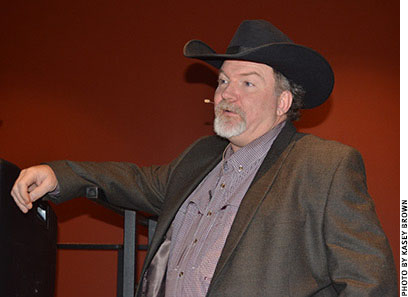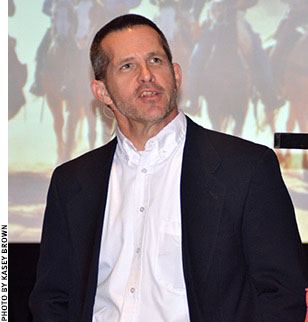Balancing Work and Life
Learn how to think past the first three dimensions to reach a balance.
Those in the cattle industry wear a lot of hats. Oftentimes, cattlemen lament that they wear too many at one time — those of laborer, manager, owner, father or mother, husband or wife, and more. However, Robin Falkner and Mike Nichols, both veterinarians with Zoetis, said being conscious of the hats worn is more important than the number of hats worn.
The pair of veterinarians spoke Feb. 4 to attendees of the 22nd Cattlemen’s College® at the 2015 Cattle Industry Convention & NCBA Trade Show in San Antonio, Texas.
All too often, when we step back and evaluate our performance as one of those hats, say a laborer or manager, the distracted performance would have gotten a hired employee fired, Nichols explained. That distracted performance also affects the amount of time spent with family in higher dimensions of thought.

Robin Falkner (pictured) and Mike Nichols, both veterinarians with Zoetis, said being conscious of the hats worn is more important than the number of hats worn.
Falkner and Nichols explained the progression of dimensions of thought. A financial example is that the first dimension is simply cost and cash flow. The second dimension in this example is the return on investment; the third is efficiency, or true accounting. The fourth — where personal life typically comes in — is time. The fourth dimension in this example gets beyond science, accounting forms and work getting in the way of family life, Nichols noted. Sometimes we get so focused on the squeaking wheel that we lose sight of the bigger picture.

All too often, when we step back and evaluate our performance as one of those hats, say a laborer or manager, the distracted performance would have gotten a hired employee fired, Mike Nichols explained.
In the bigger picture of the ranch, they explained, the seven dimensions of thought progress from laborer to manager, then owner, family member, neighbor, industry leader, mentor, legacy and eternity — though some titles reside in more than one dimension of thought. The earlier dimensions are those in which you count, then progress to account, and once you hit the fourth dimension, that turns into being accountable.
Falkner and Nichols said cattlemen should strive to reach past the fourth dimension in which we care for our neighbors or mentor young people. Nichols gave the example of the FFA motto, “Learning to do, doing to learn, earning to live, living to serve.” The last line, living to serve, is the investment of time that can really pay dividends in importance, he added. Who knows what opportunities would come of opening yourself to others?
“Quit spending time and start investing time,” Nichols recommended.
Falkner said cattlemen don’t talk about the “soft stuff,” and they talk about the money aspect often. However, what really lights up a cattleman’s eyes is talking about the legacy of the ranch, or whether they are a fifth-generation rancher.
Commit to and make time for important family occasions, whether that is a vacation, fishing or spending every Wednesday at home with family. “We have a lot of money wrapped up in our ranches, so we think that all of our priorities should be on the business, but that is not necessary,” Nichols concluded.






